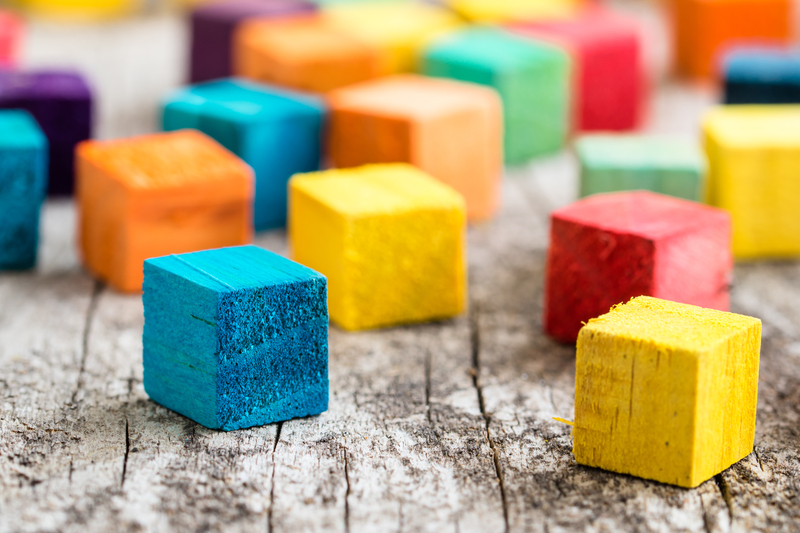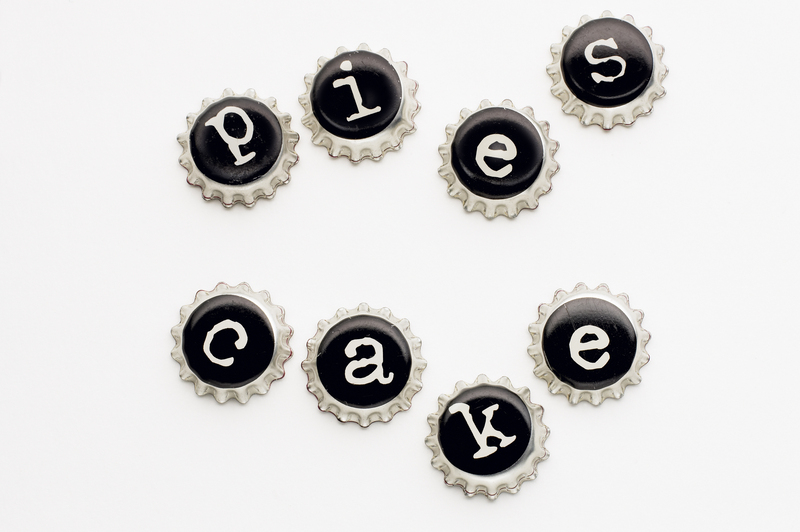Backyard Treasures: Upcycling Yard Waste for Garden Wonders
Turn your garden leftovers into nature's gold! Discover the art and science of upcycling yard waste to create a thriving, eco-friendly garden paradise. In this comprehensive guide, we uncover innovative, practical, and sustainable ways to transform what most consider trash into backyard treasures.
Introducing Upcycling Yard Waste: A New Age of Garden Ingenuity
Every backyard tells a unique story through its blooming flowers, lush lawns, and gentle shade trees. But what happens to the leftovers - the fall leaves, mowed grass, trimmed branches, and kitchen scraps? Often, these are viewed as mere waste. However, with the right approach, upcycling yard waste can open a world of garden wonders, converting refuse into resources that nurture your plants, soil, and even local wildlife.
In this article, we will dive deep into creative upcycling ideas, eco-friendly DIY techniques, and expert tips for transforming yard waste into garden treasures. Whether you are an experienced gardener or just starting out, mastering the art of yard waste reuse can bring beauty, sustainability, and cost savings to your outdoor spaces.

Table of Contents
- Why Upcycle Yard Waste?
- Types of Yard Waste Perfect for Upcycling
- Composting: Transforming Scraps into Soil Gold
- Mulching: Nature's Blanket for Healthy Gardens
- DIY Projects: Creative Upcycling for Garden Features
- Natural Pest Control Using Yard Waste
- Supporting Wildlife by Upcycling Yard Debris
- Tips for Safe and Effective Upcycling
- Common Pitfalls and How to Avoid Them
- Frequently Asked Questions
- Conclusion: Turning Your Backyard Waste into Lasting Wonders
Why Upcycle Yard Waste? The Benefits for You and the Planet
In an era of environmental awareness, upcycling garden waste is more than a trend; it's a sustainable necessity. Here's why you should consider upcycling:
- Reduces landfill waste: Organic matter makes up a large portion of landfill material, producing methane -- a potent greenhouse gas.
- Enriches your soil: Nutrient-rich compost and mulch from upcycled debris foster vibrant plant growth and healthier soil.
- Conserves water: Mulches created from yard clippings help the soil retain moisture, cutting back your water bills.
- Supports biodiversity: Piles of branches and leaves can provide vital habitats for pollinators and beneficial insects.
- Saves money: Why buy soil amendments, plant supports, or garden decor when you can make them from what you already have?
- Encourages creative DIY: Every discarded branch, leaf, or stone is a chance to enhance your garden with unique, upcycled yard projects.
Types of Yard Waste Perfect for Upcycling
Common Backyard Materials
- Grass clippings
- Fallen leaves
- Small branches & twigs
- Tree bark and cones
- Pruned shrub stems
- Garden trimmings
- Deadheaded flowers
- Pine needles
- Kitchen scraps (fruit & veg peels, coffee grounds, eggshells)
Materials to Avoid
- Disease-infected plants
- Invasive plant species seeds
- Pesticide-treated grass/clippings
- Large logs (hard to break down quickly)
With these supplies, you're ready to start turning backyard treasures into functional, decorative, and eco-conscious additions to your garden.
Composting: Transforming Scraps into Soil Gold
The Basics of Composting
Composting is the cornerstone of upcycling yard waste. By layering green and brown materials (think grass clippings and dry leaves), you create a nutrient powerhouse that supercharges your garden beds.
Setting Up Your Compost Pile
- Choose the right spot: Well-drained, partly shady, and easily accessible.
- Build layers: Alternate "greens" (rich in nitrogen, e.g., fresh cuttings, veggie scraps) with "browns" (rich in carbon, e.g., dried leaves, twigs).
- Aim for a 3:1 ratio of browns to greens.
- Keep it moist but not soggy.
- Turn the pile every 1-2 weeks for aeration.
Best Yard Wastes for Composting
- Grass clippings (untreated)
- Leaves (shredded decompose faster)
- Coffee grounds
- Shredded twigs and branches
- Old potting soil
- Plant trimmings (disease-free)
Within a few months, your heap of discards will be transformed into rich, crumbly compost--nature's ultimate fertilizer!
Mulching: Nature's Blanket for Healthy Gardens
Mulching with upcycled yard waste not only enhances your garden's look but also suppresses weeds, regulates soil temperature, and feeds the earth.
DIY Mulch Ideas
- Shredded Leaves: Perfect for flower and vegetable beds.
- Wood Chips or Bark: Ideal for pathways, trees, and shrubs.
- Grass Clippings: Use thin layers around vegetables; avoid matted buildup.
- Pine Needles: Acid-loving plants, such as blueberries, thrive with this mulch.
Tip: Avoid mulching with weeds or plants recently treated with chemical herbicides.
DIY Projects: Creative Upcycling for Functional Garden Features
Beyond compost and mulch, upcycling waste in the garden can lead to surprising and decorative outcomes. Here are some inspiring DIY projects:
Garden Markers from Branches
- Cut sturdy twigs into 6-8 inch pieces.
- Shave a flat surface and write plant names with a permanent marker.
- Decorate for charm and functionality!
Brush Pile Habitat
- Stack trimmed branches and twigs in a corner of your yard.
- This simple pile becomes a safe refuge for birds, frogs, and beneficial insects.
Living Fences & Trellises
- Weave together prunings from flexible shrubs or trees to make rustic garden arches or climbing supports.
Compost Teas
- Steep compost or nutrient-rich weeds in water for a week.
- Use the strained liquid to fertilize your garden--a powerful, homemade plant tonic!
Pathways and Edgings
- Line your garden paths with small branches, bark, or smooth stones for a whimsical, eco-friendly touch.
Natural Pest Control: Using Upcycled Yard Waste
Did you know yard waste upcycling can help control pests organically? Here's how:
- Mulch rings: Deter weeds and soil pests around fruit trees and roses.
- Eggshell barriers: Crushed eggshells act as a sharp obstacle for soft-bodied pests like slugs and snails.
- Neem leaf compost: Incorporate dried neem or marigold leaves to naturally deter nematodes and soil insects.
- Log piles: Attract predatory insects, toads, and lizards that feed on garden pests.
Supporting Wildlife by Upcycling Yard Debris
Upcycling isn't only about plants and soil--your backyard's local ecosystem thrives on creative reuse. Here's how your yard waste can help wildlife:
- Leaf piles: Provide overwintering spots for butterflies, ladybugs, and other beneficial insects.
- Bird shelters: Tidy brush piles or twig refuges offer cover for songbirds and nest materials.
- Log habitats: Leave a stack of decaying wood for beetles, salamanders, and fungi.
- Pinecones: Fill with peanut butter and seeds to create DIY bird feeders.
Tips for Safe and Effective Upcycling
- Know your source: Ensure clippings are free from herbicides, pesticides, or invasive species seeds.
- Shred large debris: Use a chipper or shears to speed up decomposition and prevent messiness.
- Avoid problematic materials: Such as thorny branches or those with persistent chemicals.
- Keep it tidy: Store piles neatly, away from the house to prevent attracting unwanted wildlife.
Common Pitfalls and How to Avoid Them
- Compost odor: Caused by poor aeration or excess greens; mix in dry leaves, turn often.
- Pest attraction: Avoid adding meats, fats, or sweets to piles to deter rodents and raccoons.
- Spreading weed seeds: Only compost weed-free lawn and avoid adding seeding plants.
- Too much yard waste: Spread projects out; excess can overwhelm one area, causing dense, soggy piles.

Frequently Asked Questions
- How quickly does yard waste compost?
With proper management, compost can be ready in as little as 6-12 weeks, depending on temperature, aeration, and material size.
- Is upcycled garden waste safe for edible plants?
Yes, if you avoid contaminated or diseased materials, your upcycled mulch or compost is safe and beneficial for food gardens.
- What's the difference between recycling and upcycling yard waste?
Recycling breaks down waste into raw materials; upcycling transforms waste into valuable products--like mulch, art, or wildlife habitats--without breaking it back to basics.
- What tools help in upcycling yard waste?
Compost bins, shredders, mulching mowers, loppers, pruners, and basic hand tools are great for DIY upcycling efforts.
Conclusion: Turning Your Backyard Waste into Lasting Wonders
Upcycling yard waste is more than sustainable gardening--it's a journey of creativity, environmental stewardship, and hands-on learning. Every leaf, twig, or scrap offers hidden potential. By embracing these backyard treasures, you nurture the earth, save money, and inspire your community to look at "waste" with new, green eyes.
Start today--transform your trimmings into garden wonders. Your flourishing, eco-friendly landscape will stand as living proof that upcycling yard waste is an essential practice for garden lovers and planet protectors alike!
Happy Upcycling!
Share your favorite tips and backyard creations in the comments and join the growing movement for greener, more beautiful gardens!
